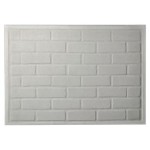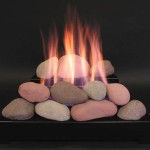The Enduring Appeal of Stone Wood Burning Fireplaces
Stone wood burning fireplaces represent a timeless architectural feature, seamlessly blending functionality with aesthetic appeal. Their enduring popularity stems from a confluence of factors, including their ability to provide efficient heating, their visual charm that enhances interior design, and the inherent connection they foster with traditional elements of home and hearth. This article will explore the key features, benefits, and considerations associated with incorporating a stone wood burning fireplace into a residential setting.
The construction of a stone wood burning fireplace typically involves the use of natural or manufactured stone, carefully selected and arranged to create both a structural and visually pleasing design. The firebox, typically constructed of firebrick, is the heart of the fireplace, designed to withstand the intense heat generated by burning wood. A chimney, essential for venting smoke and combustion byproducts, is a crucial component, requiring careful engineering and installation to ensure safe and efficient operation. The overall design can range from rustic and traditional to modern and minimalist, depending on the homeowner's aesthetic preferences and the architectural style of the house.
Modern advancements in fireplace technology have further refined the performance and efficiency of stone wood burning fireplaces. Features such as airtight doors, catalytic converters, and secondary combustion systems work to reduce emissions and increase heat output. These improvements address concerns regarding environmental impact and enhance the overall heating capabilities of the fireplace.
Efficiency and Heating Capabilities
One of the primary benefits of a stone wood burning fireplace is its ability to provide substantial heat, particularly during colder months. The thermal mass of the stone itself plays a significant role in this process. As the fireplace burns, the stone absorbs heat and gradually radiates it into the surrounding space. This radiant heat is notably effective in warming objects and individuals directly, creating a comfortable and inviting atmosphere. In contrast to forced-air heating systems, which can sometimes create drafts and uneven temperature distribution, the radiant heat from a stone fireplace provides a more consistent and localized warmth.
The efficiency of a stone wood burning fireplace, however, can vary depending on several factors. The type of wood used, the design of the firebox, and the presence of features like airtight doors all influence the amount of heat generated and the overall efficiency of the combustion process. Hardwoods, such as oak and maple, tend to burn longer and produce more heat than softwoods, such as pine and fir. Regularly maintaining the fireplace, including cleaning the chimney and ensuring proper airflow, is essential for maximizing its heating potential.
Furthermore, the placement of the fireplace within the home can impact its effectiveness. A centrally located fireplace can more effectively distribute heat throughout the house compared to one placed in a corner or against an exterior wall. Homeowners should carefully consider the layout of their home and the typical patterns of heat loss when determining the optimal location for a stone wood burning fireplace to achieve maximum heating efficiency.
Aesthetic and Design Considerations
Beyond its functional benefits, a stone wood burning fireplace serves as a striking focal point in any room. The natural beauty of stone, with its variation in color, texture, and pattern, adds a touch of rustic elegance and timeless appeal. The design options are virtually limitless, ranging from stacked stone fireplaces that evoke a sense of ruggedness to sleek, modern designs that incorporate smooth, polished stone. The choice of stone can complement the existing décor and architectural style of the home, creating a cohesive and harmonious living space.
The size and scale of the fireplace should be carefully considered in relation to the size of the room. A large fireplace may overwhelm a small space, while a small fireplace may appear insignificant in a large room. The proportions should be balanced to create a visually pleasing and comfortable environment. Furthermore, the design of the mantel, hearth, and surrounding area can further enhance the overall aesthetic appeal of the fireplace. A thoughtfully designed mantel can provide a display space for decorative items, while a spacious hearth can offer a comfortable seating area near the warmth of the fire.
The installation of a stone wood burning fireplace should be entrusted to experienced professionals who can ensure proper construction and adherence to safety codes. This is particularly important for the chimney, which must be properly sized and constructed to ensure adequate draft and prevent the buildup of creosote, a flammable substance that can pose a fire hazard. Regular inspections and maintenance are essential to ensure the safe and efficient operation of the fireplace.
Environmental and Safety Aspects
While the allure of a stone wood burning fireplace is undeniable, it's crucial to acknowledge and address the environmental and safety considerations associated with its use. Wood burning can contribute to air pollution, particularly in densely populated areas. The combustion process releases particulate matter and other pollutants into the atmosphere, which can have negative health effects.
To mitigate these environmental concerns, homeowners can take several steps. Using seasoned wood, which has a lower moisture content, results in cleaner and more efficient burning. Investing in a high-efficiency fireplace with features like airtight doors and catalytic converters can also significantly reduce emissions. Regularly cleaning the chimney and ensuring proper airflow are essential for optimizing combustion and minimizing the release of pollutants.
Safety is paramount when operating a wood burning fireplace. Installing and maintaining a carbon monoxide detector is crucial, as carbon monoxide is a colorless and odorless gas that can be fatal. Never leave a fire unattended, and ensure that flammable materials are kept a safe distance from the fireplace. Creosote buildup in the chimney poses a significant fire hazard, so regular inspections and cleaning are essential. Following these safety precautions can help ensure the safe and enjoyable use of a stone wood burning fireplace.
Moreover, local regulations regarding wood burning may exist, particularly in areas with air quality concerns. Homeowners should familiarize themselves with these regulations and comply with any restrictions on burning days or the type of wood that can be used. By taking these steps, homeowners can enjoy the warmth and ambiance of a stone wood burning fireplace while minimizing its environmental impact and ensuring the safety of their home and family.
The selection of the right stone is also crucial. Different types of stone possess varying levels of heat resistance and durability. Some stones may be more susceptible to cracking or discoloration under high temperatures, while others are more resistant. Consulting with a qualified stonemason or fireplace installer can help homeowners choose a stone that is both aesthetically pleasing and suitable for the demands of a wood burning fireplace.
The integration of technology can further enhance the convenience and control of a stone wood burning fireplace. Automated damper controls can regulate airflow and optimize combustion, while remote monitoring systems can provide alerts for maintenance needs or potential safety issues. These technological advancements can make operating a wood burning fireplace more efficient, safer, and more user-friendly.
Ultimately, the decision to incorporate a stone wood burning fireplace into a home is a personal one, weighing the benefits of warmth, aesthetics, and tradition against the considerations of environmental impact and safety. By carefully considering these factors and making informed choices, homeowners can create a welcoming and inviting living space that is both beautiful and functional.

65 Best Stone Fireplace Design Ideas

Natural Stacked Stone Veneer Fireplace Ideas

Spear Builders Of Virginia Mastering Wood Fired Fireplace Designs

Stone Veneer Fireplace Ideas That Will Warm Up Your Home Ply Gem

Fireplaces

Fireplaces

Eldorado Fireplace Surround Outdoor Gas Chimney In Anaheim

Six Traditional Wood Burning Fireplaces Two Foot Ten

The Rise Of Wood Burning Stove Stamford Stone

Stone Fireplaces








